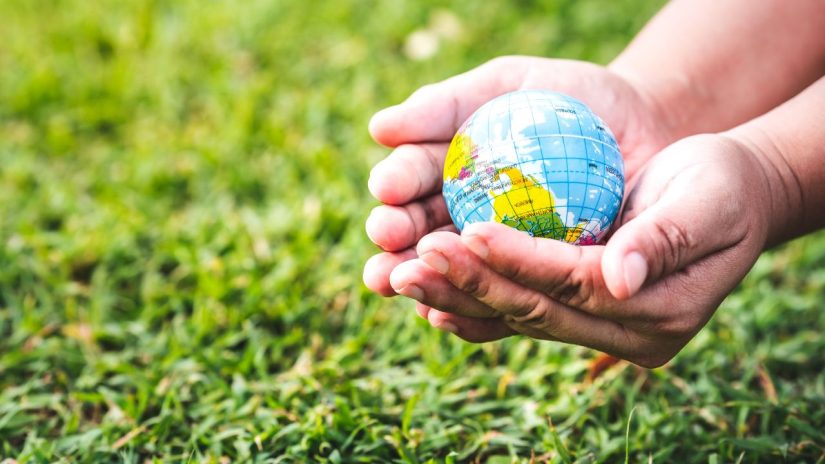
Anthon Jason
Humans are creatures that live between the mountains and the sea. However, humans are not the only inhabitants of this liminal space. Between the mountains and the sea, humans live by absorbing, taking, and often destroying what is above and below the landscape. Not all humans, but always humans. By exploring who, why, and how life between mountains and seas is changing, we are invited to learn to collaborate with humans and non-humans for future generations, regardless of religious or cultural backgrounds.
The Wednesday forum features guest speaker, Arahmaiani, who has dedicated her life to intercommunity, interfaith, and international work, with a focus on empowering local communities and preserving the environment. In her presentation, titled “Between the Mountain and the Sea,” she shared her experiences in Indonesia and Tibet. Through her work in art and local community empowerment, she showed how spirituality, art, and community action can be a transformative force in addressing environmental and social challenges.
Community Experience: Between Tibet and Indonesia
The “mountain-sea” metaphor is not abstract. Indonesia’s archipelagic geography means millions live in liminal zones, coastal villages, river valleys, and mountain slopes, where environmental degradation is both visible and personal. Deforestation, overfishing, pollution, and climate change disproportionately affect the poor and marginalized, stripping away livelihoods and cultural identity.
Arahmaiani emphasized that the success of environmental projects relies heavily on empowering local communities, especially the marginalized ones. In Yogyakarta, after the 2006 earthquake, collaboration with pesantren not only restored the local economy through organic farming but also built sustainable ecological awareness. Santri are involved in discussions, training, and production of eco-friendly products, the proceeds of which are used to support the pesantren’s operations and the needs of the surrounding community. This approach combines discussion, education, and action, demonstrating that social and environmental change can be started from the grassroots community.
In Tibet, Arahmaiani works with monks and the communities of 16 villages around Lab Monastery. Initiatives such as waste management, mass tree planting, clean water projects, and collective yak enclosures are clear evidence that collaboration across religions and cultures can build ecological awareness and community solidarity. Initial challenges such as community resistance were overcome through dialogue and adjusting the narrative to local values, for example by referring to the history of tree planting by 13th Lab Kyabgon Rinpoche in 1914.
Local Community Empowerment: Bottom-Up Strategy
Recent research has shown that the success of conservation and the improvement of the welfare of marginalized communities rely heavily on the recognition of local socio-cultural practices and their involvement in decision-making. This is in line with what Arahmaiani has done in her community empowerment activities in Indonesia and Tibet. It shows that when communities are given the space to collectively manage resources, positive social and ecological outcomes can be achieved: from forest restoration, waste management, and food sovereignty development.
However, cross-institutional collaboration and trust-building are key prerequisites. In many areas, external policies that ignore local rights and practices fuel resistance and conservation failure. In contrast, recognition of customary rights, transparency, and intercultural dialogue strengthen communities’ capacity to be effective stewards of nature. The forum highlighted that this collaboration is essential, but not always easy. Key challenges include differences in values, cultural resistance, and a lack of policy support. However, experiences in Tibet and Indonesia prove that dialogue, adaptation of narratives, and respect for local knowledge can overcome these obstacles.
The importance of recognizing the rights of local communities and empowering them as key actors in conservation is a central point. Global studies show that areas managed by indigenous peoples and local communities tend to have higher levels of biodiversity and lower rates of degradation. However, pressures from industrial expansion and policies that ignore local rights remain a serious threat.
From the presentation we also learned that local communities are not just victims; they are often the last custodians of ecological wisdom. Their survival strategies, rotational farming, community-based fisheries management, and sacred forest protection, are rooted in generations of lived experience. Yet, these communities are routinely excluded from policymaking and development agendas. Arahmaiani emphasized that real change begins when communities are treated as partners, not passive recipients. Faith leaders could facilitate participatory processes, organizing meetings, mediating conflicts, and ensuring that women, youth, and the poor have a voice. This empowerment leads to more effective and sustainable environmental solutions.
Conclusion: Toward a Sustainable Future
“The Mountain and the Sea” forum emphasized that the future of environmental and social well-being depends on our ability to build collaborations across religions, communities, and science. Experiences in Indonesia and Tibet prove that spirituality, art, and local community action can be transformative forces in addressing environmental and social challenges. As stated in the opening of this article, not all humans are destructive, but all humans can take part in environmental conservation. This is the call of the times: to live, work, and pray together among the mountains and seas, for a better future for all.
Finally, living between the mountains and the sea is a metaphor for connectedness, vulnerability, and shared responsibility. By learning from experiences across cultures and religions, we are invited to build a more just, sustainable, and hopeful future for humanity and all beings on earth.
